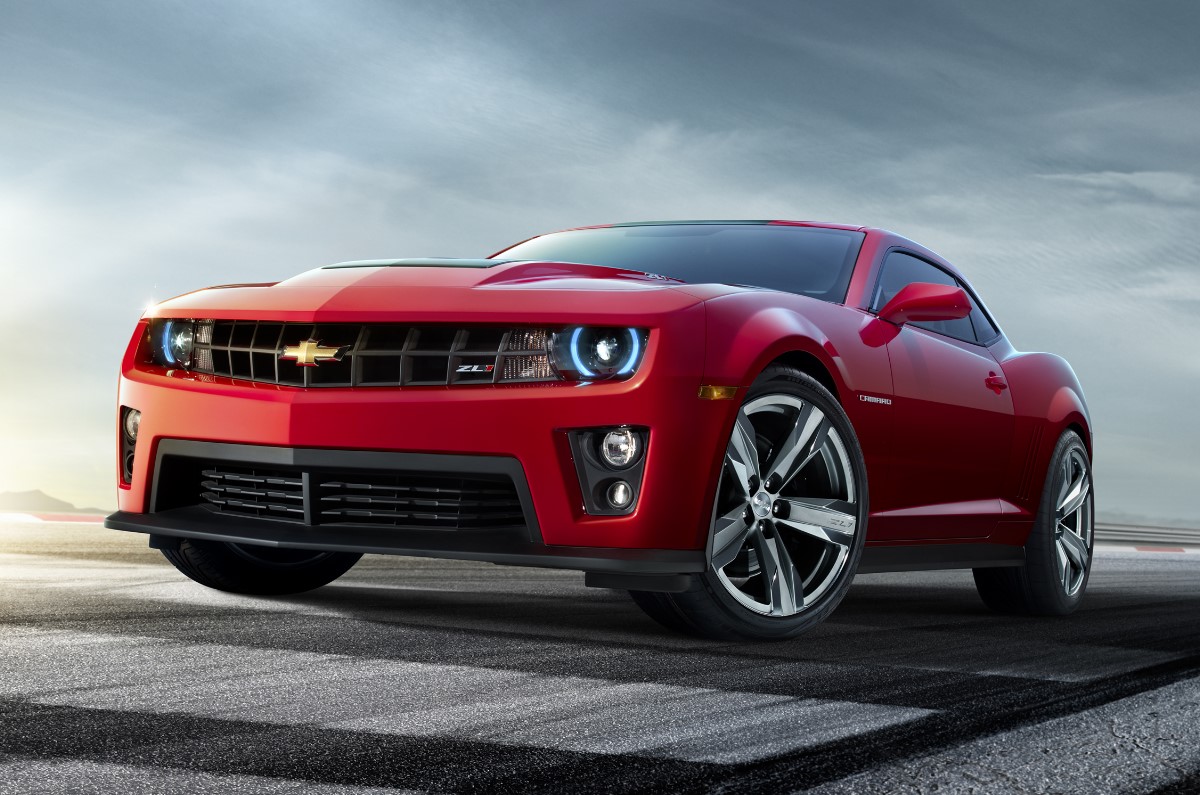Camaro ZL1 Joins the 11-second Club
 |
 |
| Camaro ZL1 |
The 2012 Chevrolet Camaro ZL1 is officially in the “11-second" club, as engineers recently turned an 11.93-second/116-mph quarter-mile elapsed time run in a showroom-stock Camaro ZL1 automatic. A Camaro ZL1 manual ran an 11.96-second ET at 117 mph.
Only a few other production vehicles can run the quarter-mile as quickly as the ZL1. Fewer yet can also run 0-60 in 4 seconds, reach a top speed of 184 mph and lap the famous Nurburgring in 7:41.27 – all with the street-legal, factory-issued components and no time-consuming equipment adjustments at the racetrack.
“The ZL1 is great at everything and we’re very proud of that," said Tony Roma, Camaro ZL1 program engineering manager. “You can take it to the drag strip and run 11-second quarter-miles all day long. You can also take it to a road course, where it’s balanced, handles well, and does exactly what you want – including lapping Virginia International Raceway’s Grand Course in under three minutes – and yet the ZL1 is sophisticated enough to use as a daily driver. It’s a supercar you can drive every day."
For perspective, the Camaro ZL1 is so quick that some drivers who experiment with “drag radial" tires or full racing slicks may find themselves going too quick for most NHRA-sanctioned racetracks, where a five-point roll bar is required for vehicles running 11.49 or quicker. The 11.93-second ET in a stock ZL1 tested by the engineers wore the factory-issued Goodyear Eagle F1 Supercar G:2 tires developed specifically for it, putting the car only a scant 0.44-second away from that additional racing safety requirement.
Tuned for the drag strip
The original, special-order 1969 Camaro ZL1s are still revered for their legendary performance on the drag strip and Chevrolet was keenly aware that customers for the new, 21st century edition would undoubtedly test its straight-line mettle in quarter-mile increments.
The Camaro team re-engineered 30 percent of a Camaro 2SS to make the ZL1, including special modifications just for the drag strip.
“We know many of customers will take their ZL1 to the drag strip," said Gordon Rojewski, driveline development engineer – and who is also an experienced drag racer and owner of a turbocharged, 920-horsepower street car. “Some may just go once, to experience the full potential of the 580-horsepower LSA engine. Others may be more serious, going every other weekend with a set of slicks in the trunk. As such, we set out to make sure the ZL1 would perform for them – on the first pass and on the 100th."
For example, to withstand the heavy loads of repeated hard launches, the ZL1 features a stout 9.9-inch rear differential mounted in a robust cast iron center section. It also features a standard differential cooler that can lower the temperature by 100 degrees F for improved performance and longevity.
The ZL1 also features asymmetrical half-shafts: a 60mm hollow shaft on the right and a 33mm solid shaft on the left. The different torsional stiffness rates of the shafts work in conjunction with the limited-slip differential to minimize the chance of wheel hop at launch. Engineers modified the rear suspension, as well, to accommodate an 18-inch wheel, for owners who want to fit a set of drag-radials with taller sidewalls to improve their ETs.
Even the ZL1’s exclusive Performance Traction Management (PTM) was tuned for the drag-strip. It integrates third-generation Magnetic Ride Control, launch control, traction control, electronic stability control and electric power steering response to enhance performance. Launch control (manual transmission only) automatically modulates engine torque for the best-possible acceleration without excessive wheel spin. When the driver pushes the throttle to the floor, the system holds a predetermined engine speed until the driver releases the clutch. Then, the system modulates engine torque 1,000 times per second to maximize the available traction.
Mode 5 of launch control is uniquely calibrated for drag strips that use VHT or similar traction-enhancing compounds on the starting line. In addition to validating the system for the stock tires, engineers also tested it with 18- and 20-inch racing-type drag radial tires in anticipation of the specialty tires many drivers will use at the track. Drag radials are very soft and provide nearly the traction of a full racing slick, allowing the car to launch at a higher rpm without wheel spin, which can translate into an even quicker ET.
Proven with 1,000 hard launch tests
To test the chassis and suspension components to ensure they were up to repeated hard-start launches typical at the drag strip, engineers subjected the ZL1 to the grueling “Woodward Avenue Schedule" at the GM Milford Proving Ground.
Named for the famous cruising route that cuts north through Detroit’s suburbs and has been the venue for untold thousands of unofficial launch capability demonstrations since the 1960s, each test cycle is a hard-launch, standing-start drag race up to 100 mph. The ZL1 was subjected to 1,000 test cycles before its driveline was stamped “approved".
 |
| It will come in a convertible version too |
“The Woodward Avenue Schedule was a really brutal test, but it told us the Camaro ZL1 would live up to the way we knew our customers would drive it on the track," said Rojewski.
The Camaro ZL1 is on sale now with a suggested retail price of $54,995 – including a $900 destination charge. The 6L90 six-speed automatic transmission includes TapShift control and is a $1,185 option. The Camaro ZL1 convertible goes on sale this summer.
